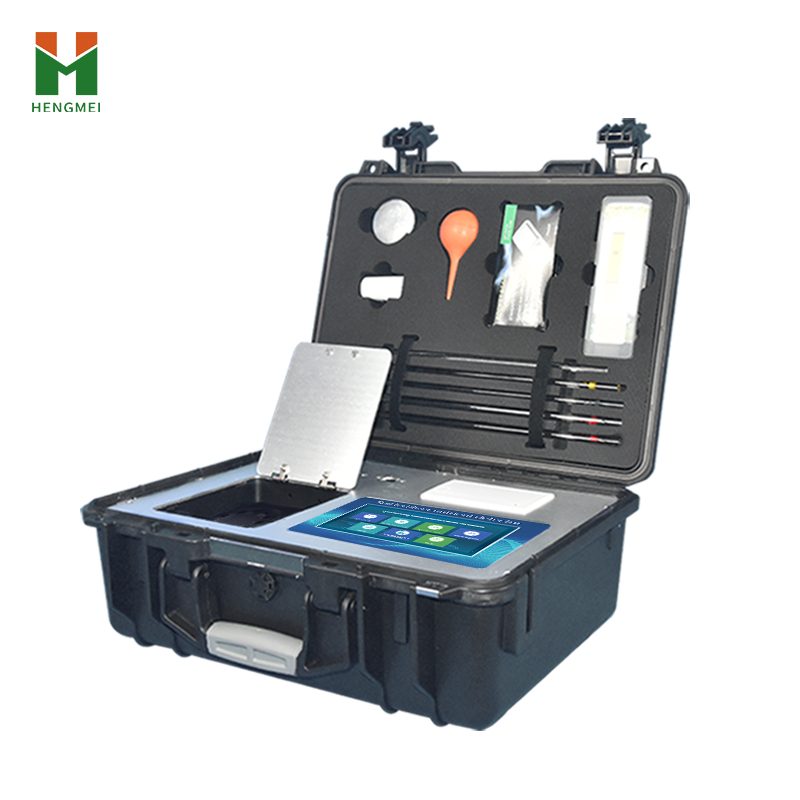Although the content of trace elements in soil is very low, it is a key factor in the healthy growth and quality formation of crops. Traditional soil testing methods require samples to be sent to professional laboratories, which is cumbersome and time-consuming, making it difficult to meet the timeliness requirements of modern precision agriculture. The soil trace element detector integrates precision optical detection technology and intelligent data analysis system, achieving rapid and accurate detection of multiple elements in soil, fertilizer, crop and other samples, providing strong technical support for scientific fertilization and soil management.

Technical principles
The core technology of soil trace element detector is based on the integration of precision photoelectric colorimetric method and intelligent algorithm analysis:
1. Optical detection system
Adopting a four wavelength professional cold light source (red, blue, green, orange), the light source has a stable wavelength and a lifespan of 100000 hours, effectively avoiding temperature drift phenomenon.
Precision rotating colorimetric cell design (patent number: ZL 2018 2 1777724.7), equipped with a standard 1cm colorimetric dish, accurate optical path positioning, shielding from external interference, ensuring detection accuracy.
High precision filter technology (patent number: ZL 2020 2 1763837.9) ensures that the linear error of absorbance measurement is ≤ 0.1%.
2. Intelligent analysis process
After the sample reacts with a specific reagent, the absorbance is measured by colorimetric method, and the built-in algorithm automatically calculates the element concentration.
Built in calibration function during the detection process, intelligent constant current voltage stabilization, and automatic calibration of light intensity ensure accurate and reliable data.
3. Multi functional integrated design
8 rotating detection channels, supporting rapid detection of 8 samples at once, significantly improving detection efficiency.
Technical advantages
Compared with traditional laboratory methods, soil trace element detectors have the following outstanding advantages:
1. Efficient batch processing
8-channel synchronous detection, measuring one soil sample (N, P, K) only takes 20 minutes, and detecting 8 soil samples at the same time takes ≤ 1 hour.
2. High precision and stability
The detection error of soil nitrogen, phosphorus, and potassium is ≤ 1%, the error of organic matter is ≤ 2%, the relative error of trace elements is ≤ 5%, and the stability is 6 times better than the national standard.
Obtained the "Calibration Certificate" from the China Institute of Metrology, which provides authoritative certification for its accuracy.
3. Intelligence and Convenience
Android intelligent operating system, 7-inch true color touch screen, intuitive and easy to operate.
Built in crop expert fertilization system, supporting fertilization recommendations for over a hundred crops; Equipped with a nutritional diagnostic map to assist in the diagnosis of leaf abundance and deficiency.
4. Powerful data management
Supports WiFi, 4G, GPRS wireless data transmission, and can be uploaded in batches to the smart cloud agriculture platform for long-term data management and visual analysis.
Equipped with a new generation thermal printer, it automatically generates detection reports containing QR codes.
5. Multi scenario applicability
High strength PVC engineering plastic carrying case design, dual-use AC and DC power supply, built-in large capacity lithium battery, can work continuously for 10 hours on full charge, suitable for field flow detection.
Application Fields
The soil trace element detector is widely used in the following scenarios:
Agricultural production: rapid soil nutrient diagnosis in the field, guiding scientific fertilization (if controlled by trace elements in the garden).
Agricultural material services: quality testing and authenticity identification of fertilizers (such as nutrient content analysis of compound fertilizers).
Research and education: Soil plant system research, teaching demonstrations (such as agricultural experiments in universities).
Environmental monitoring: Screening for soil heavy metal pollution (such as cadmium, lead, and other pollution risk assessments).
Food quality: Testing for nitrate, nitrite, and heavy metal content in fruits and vegetables.
The soil trace element detector has solved the bottleneck of traditional detection methods in terms of timeliness, portability, and ease of operation through technological innovation. Its high-precision detection, intelligent recommendation, and multi scenario applicability make it an important measurement tool in modern precision agriculture.
Article address:https://www.soiltesting.cn/news2/128.html






